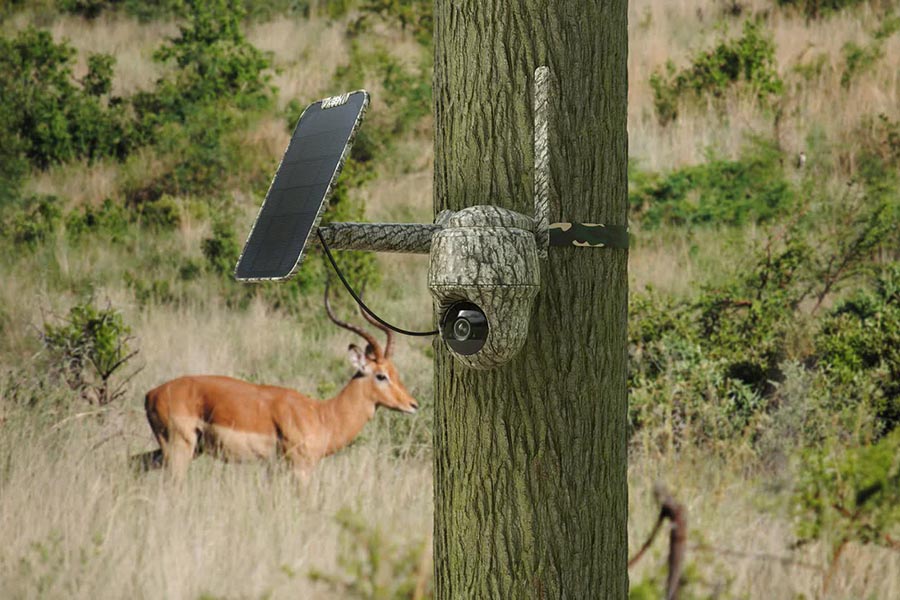Whitetail Waterhole Strategies to Influence Deer Movement
Whitetail Waterhole Strategies to Influence Deer Movement

One of the simplest and most effective methods to influence deer movement is by installing strategically placed waterholes.
With just a few supplies and some effort, you can create a waterhole that will become an essential part of the local whitetail’s daily routine. The size of the tank you need depends on how you plan to keep the waterhole filled.
I recommend using a tank that holds at least 70 gallons, so you won't need to refill it often. The larger the tank, the better; however, the bigger the tank, the more you’ll have to dig and the more water you’ll need to fill it.
Choosing a Waterhole Location for Deer
The location of your waterhole is undoubtedly the most crucial factor in its success. Areas between bedding and food sources are ideal spots. The value of the waterhole increases significantly if both the bedding area and food source are dry.
A dry bedding area, however, is more critical than a dry food source. Deer leaving a dry bedding area often stop at waterholes before heading to their evening feeding, even if water is available at the food source. This is an excellent reason to limit the amount of water available at food sources. By reducing the water on your land, you can greatly enhance the value of the waterholes you create.
After identifying a suitable location for a waterhole, the next step is choosing a spot that benefits you as a hunter. Waterholes provide excellent opportunities for stand placement. If waterholes are placed far from your stands, their value diminishes as they encourage movement in areas you can’t hunt. Instead, place them to reinforce existing travel patterns or slightly alter routes to areas where you can hunt with minimal risk of spooking deer. Waterholes serve as a "quick stop" for deer, so placing them along travel corridors between bedding, staging, and feeding areas allows you to fully capitalize on their attraction.
Waterhole Installation Tips
Once you've identified the ideal location for your waterhole, the next step is installation. The method of installation may vary depending on the level of hunting pressure in your area. In areas with little to no hunting pressure, you can often place and fill a metal stock tank above ground without issue.
However, in areas where hunting pressure is higher, it's important to make your waterhole as natural as possible. Though it requires more effort, digging your tank so that its brim is level with the ground is highly recommended for two main reasons:
- It looks natural! Deer are less likely to be spooked by tanks that are buried into the ground.
- It makes it easier to keep your tank full!
If you dig the tank deep enough, it will naturally fill with runoff whenever it rains. This will save you significant time and effort over the long term.
When you fill your tank for the first time, it's a good idea to add some dirt to the bottom. This not only helps make the waterhole look natural, but it also mimics the conditions of natural water sources that deer are accustomed to. Deer are not deterred by mud and dirt when seeking mineral-rich water.
Finally, after filling your tank, be sure to place a branch or create some sort of "ramp" that allows small animals and rodents to escape if they fall into the waterhole.
How Often Should You Empty and Clean Deer Waterholes?
I recommend freshening your waterhole at least once a year. While deer tolerate a fair amount of debris and grime in waterholes, they tend to avoid those that develop a rotten odor. It’s in your best interest to keep the waterhole relatively clean by removing fallen leaves and any animals that couldn’t escape.
The most important aspect of maintaining your waterhole is ensuring it remains full. Once it becomes part of the local herd's daily movement, the deer will rely on it being consistently filled. It may take a week or two for them to get used to it, but once it becomes a regular stop in their routine, they will continue to visit it. However, if the waterhole runs dry, it can take weeks for the deer to return to it after it’s been refilled.
Conclusion
Water is undeniably a powerful tool for defining deer movement. The drier the area, the more valuable the water becomes. Placement is key, but be cautious not to install too many waterholes, as this will reduce the significance of each one.
For instance, on an 80-acre parcel, 3 to 4 water sources are sufficient. When conditions are right, and the waterholes are strategically located between bedding areas and evening feeding sites, deer will soon include them in their daily routines. Waterholes tend to see the most activity in the late afternoon or evening, early in the morning as deer return to bed, and frequently during the day by bucks during the rut.
By keeping your waterholes full and avoiding frequent disturbances, they will become prime attractions and valuable hunting spots.




